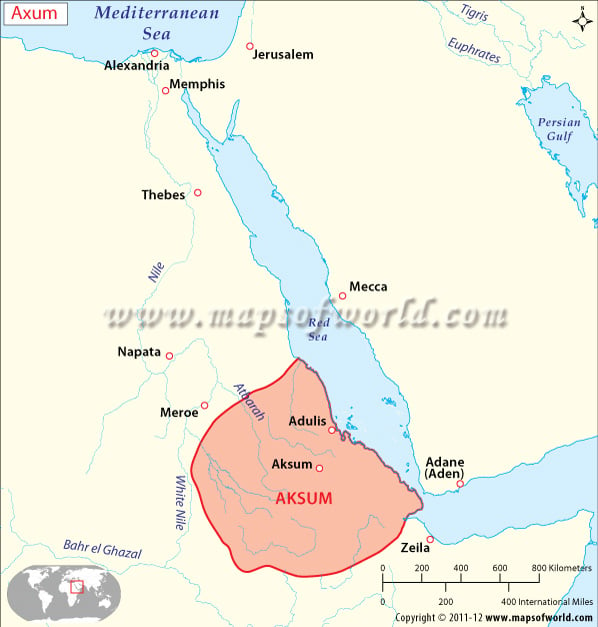Axum (also spelled Aksum) in modern-day Ethiopia was the capital of the Kingdom of Axum. The kingdom was a significant empire in Africa between 100 BC and 700 AD. The Kingdom of Axum was a mighty naval power and excelled in maritime trade. The empire was one of the mightiest in all of Africa.
The Axum kings maintained that they descended from King Solomon. The Axumites believed that Menelik, the son of King Solomon, brought the Ark of the Covenant containing the Ten Commandments to Axum. In the fourth century AD, the kings of Axum embraced Christianity and created one of the earliest Christian empires of the world. But this also meant the end of the indigenous pagan religion and a number of other ancient traditions. The Ark is now believed to be protected by a monk in a church in Axum, though visitors are not allowed to see the Ark.
Life in Axum
By the third century AD, the Axumite kings had developed their own currency and were known to use coins. The Axumites used their own language, called Geez. The language had its own script and all official records were maintained in Geez. The palaces, churches, tombs, and other beautiful structures of Axum testify to the superior skills of Axumite masons. In 320 AD, the Axumite king Ezana became the first to embrace Christianity. While the religion was adopted by the masses, a unique combination of pagan and Christian traditions formed the core of the Axumite society. One of the oldest cathedrals in the world, Church of Our Lady Mary of Zion, was constructed in Axum in 340 AD.
Obelisks of Axum
The Axumites declared the might of their empire and their political clout by building obelisks. Over three hundred of these can still be found standing in a field in Axum. Also known as stelae, these obelisks were the grave markers of the Axumite kings and queens. The largest among these monolithic carved stones is estimated to have weighed more than five hundred short tons and would have been about a hundred and eight feet tall.
The stelae of Axum are believed to be over 2000 years old. These are a marvel, because they were carved, transported, and erected without any of the mechanical devices of the modern world. A number of underground rooms were used to entomb the royals in this cemetery. The royals were buried here with hoards of treasures to aid the royals in their afterlife.
Trade Ties of Axum
The kingdom of Axum was one of the greatest trading powers of the ancient world. They developed robust maritime trades with India, Arabia, Egypt, and the Roman Empire. The major items of trade were gold, ivory, and spices. The Axumite kingdom reached the peak of its power in the sixth century AD. Frequent skirmishes with the Islamic kingdoms surrounding Axum and the subsequent invasion of the Muslims affected the maritime trade and commerce severely. Axum was soon cut off and became a landlocked state with its economy in shambles. Mass exodus contributed to the decline of the mighty empire of Axum.

 Satavahana Empire
Satavahana Empire